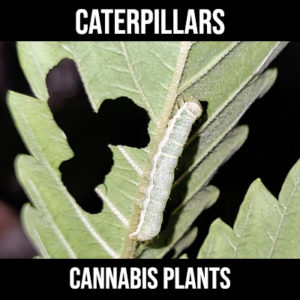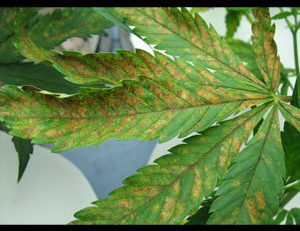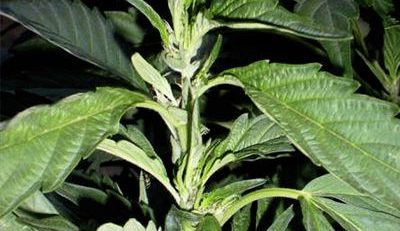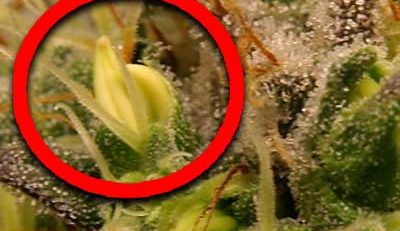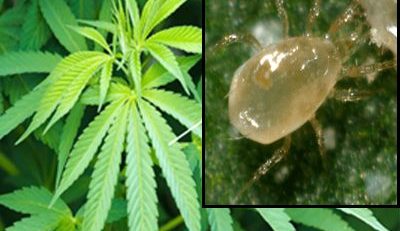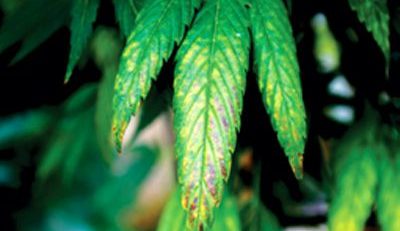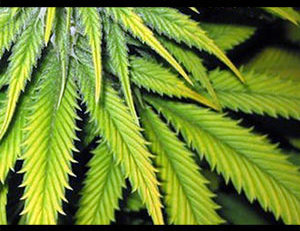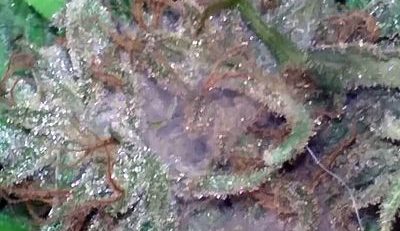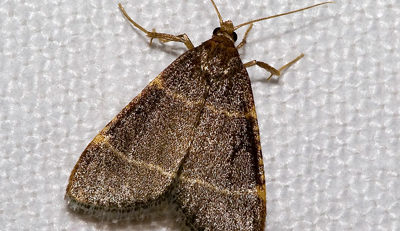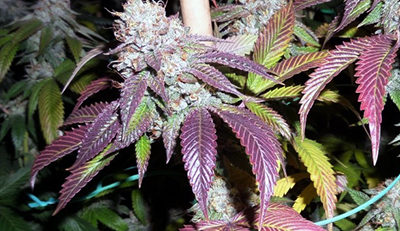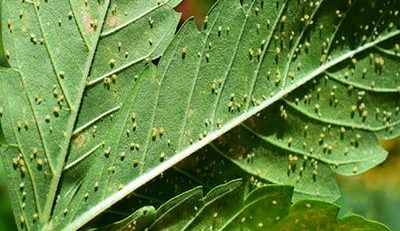Caterpillars on cannabis plants
Most people are aware that all types of plants are vulnerable to pests such as caterpillars, cannabis plants are no exception to this. Caterpillars are a very common issue for both farmers and casual gardeners as they begin consuming large quantities of leaves whilst preparing for metamorphosis to become a butterfly or moth. We will look into how to spot a caterpillar infestation, the different species of caterpillars and moths or butterflies, how to treat an infestation, and how to prevention methods.
Contents
Are cannabis plants vulnerable to caterpillars?
The short answer is yes, most plants are vulnerable to pests such as caterpillars, including cannabis plants. Outdoor grown plants are more likely to encounter issues with caterpillars but indoor grown plants are also at risk, as an infestation can be caused by a single butterfly or moth. The risk to cannabis plants is that caterpillars can quickly eat through large amounts of leaves which will leave plants weak and damaged, there are also some species that can eat the plant roots and stems which is fatal for any plant. Caterpillars are a serious threat to the cannabis plant and must be dealt with swiftly and promptly.
Different types of caterpillars and the risk to plants
Cutworm caterpillars

These caterpillars live within the soil and potentially cause the most damage to a plant as they eat the plant stems and roots as well as the leaves. Found throughout the UK, moths lay eggs in groups of 30-50, they are very destructive pests, they will stay beneath the soil during the day and consume the plant at night, which makes it difficult to notice them until the damage starts to show.
Tomato hornworm caterpillar / moth

These caterpillars and moths are found in Northern Mexico and Canada, they have voracious appetites and will eat mostly leaves. The moths lay between 250-350 eggs but have been reported to lay up to 1400 eggs in the right conditions! The eggs will hatch within 5 days.
Copper Underwing Caterpillar / moth

The copper underwing caterpillar and moth are found widely in the USA, Canada and the UK. They are at times referred to as cutworms due to the caterpillars feeding on roots, stems and leaves. This species can cause serious damage to plants.
White-Lined Sphinx Caterpillar / moth

This species of caterpillar and moth is found in the USA, the female can produce hundreds of eggs at a time which are laid onto plant leaves. Once hatched the caterpillars will eat their way through many leaves. This species has a distinctive spike on its back, this spike is no threat to humans.
Cabbage White Caterpillar (North American name) / Small White (European name)

The cabbage white butterfly is found typically in Europe and North America, the butterfly will lay eggs in clusters of 30-100, the eggs are typically yellow in colour and will be laid on the underneath of the leaves. This species will go from egg to adult in around 30 days. The caterpillars may be easier to notice on plants due to the bold black markings, this species will mostly eat plant leaves.
Cabbage Looper Moth Caterpillar / moth

The cabbage looper moth and caterpillar can be found across the USA, Canada, Mexico and Europe. This species favours cabbage plants but will eat most leaves it comes across. The moth can lay up to 250 eggs at a time, these eggs only take 10 days to hatch.
The signs your cannabis plant has a caterpillar infestation

Above you can see a cannabis plant that is undergoing a caterpillar infestation. Once the caterpillars take hold, damage like the above can happen in a week or less. Some cases can be much worse so action should be taken quickly to remove this common pest. Scroll to the next section below for more information on treating this infestation.

Responsible growers would be checking their plants regularly to ensure any issues are resolved quickly with minimal damage sustained to the plants. One of the earliest signs of a caterpillar infestation is holes appearing in the leaves (see image above), this is where the caterpillars have begun to eat the leaves.
There are also some caterpillar species, such as Copper Underwing Caterpillars, that eat the roots and the stems, this is particularly damaging to plants. Very vigilant growers may even be able to spot the caterpillar eggs before they have a chance to hatch and eat the plants, the eggs are quite small which does make it harder to spot them, however, it’s not impossible. The eggs are small and round generally clear to yellow in colour.
Another sign that growers may notice is small brown dots appearing on the leaves, this can easily be mistaken for small pieces of soil, however, this is caterpillar feces. Caterpillars eat a lot of leaves whilst they are preparing to change into a butterfly or moth, resulting in a lot of waste. The longer the caterpillars are on the plants more waste will be noticeable.
The most obvious sign of an infestation would be to see the caterpillars on the plants, most caterpillars are more active at night which may make it harder to notice the infestation at first, especially as they tend to sleep underneath leaves so they aren’t visible at a glance. Another very early warning sign would be if growers spot butterflies or moths around their plants regularly as they may be laying eggs on the plants. Some caterpillars will eat the buds as well as the leaves, this will be identified by rotting buds or dark patches.
How to treat a caterpillar infestation
• Removing the caterpillars- One of the simplest ways to treat a caterpillar infestation is to manually remove them, this process can be lengthy and there is no guarantee to remove every insect, there may also be eggs still on the plant which could hatch more caterpillars.
• Natural insecticide- A natural insecticide ensures only the pests are destroyed, using a product such as neem oil will only affect the caterpillars and will not cause harm to the cannabis plant or to the cannabis user.
• Pyrethrum-This is a low toxicity insecticide that can be sprayed onto the plants, killing the caterpillars instantly.
• Other insects- Some growers will even introduce other insects such as praying mantis or wasps, these insects will eat the caterpillars and will not harm the plants at all. Outdoor growers have the advantage of nature, there are many other insects and birds that will naturally prey on caterpillars.
How to prevent a caterpillar infestation
It can be difficult to prevent a caterpillar infestation but there are a few things that can be done beforehand and during.
Outdoor growers are more vulnerable to pests such as caterpillars than indoor growers, if you notice moths or butterflies around the plants remove them, they may be attempting to lay their eggs.
Monitor plants regularly, check for eggs and other signs of an infestation then treat accordingly. Always check on the underside of fan leaves for pests and most of them will naturally stay on the underside to avoid other insects that prey on them.
An insecticide can also be used on plants before an infestation to minimise the risks, most growers use neem oil as this is a nice natural, yet an effective, way to keep these pests at bay.
Conclusion
caterpillars are very common pests worldwide and most definitely enjoy eating cannabis plants and cause a lot of damage. There are a few measures that can be put in place to minimise the risk of infestation as mentioned above and there are ways in which to treat the infestation to save the plants.
Please be aware that this article is written for informational purposes only.

